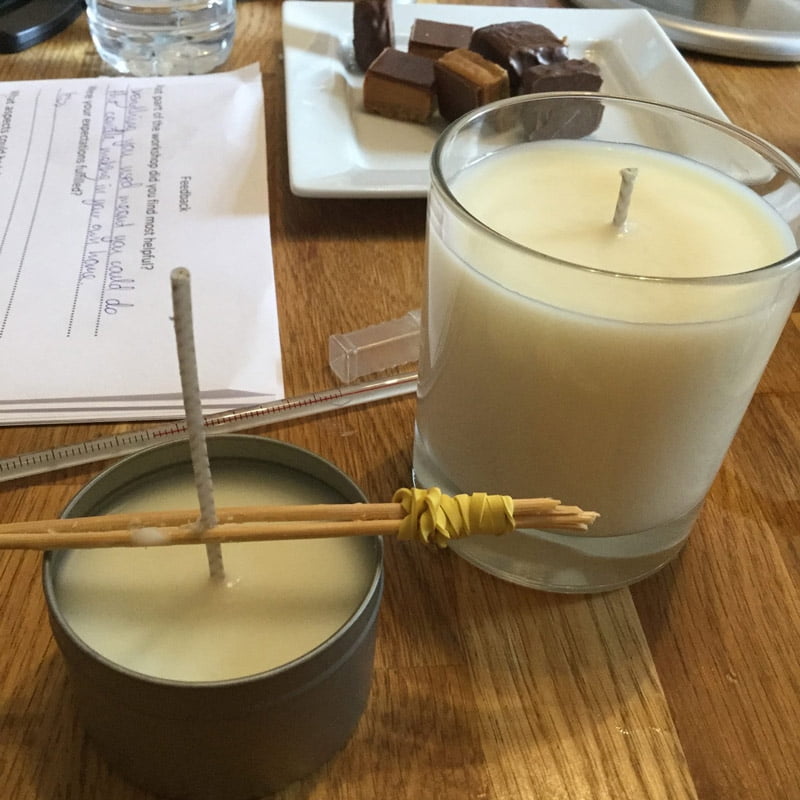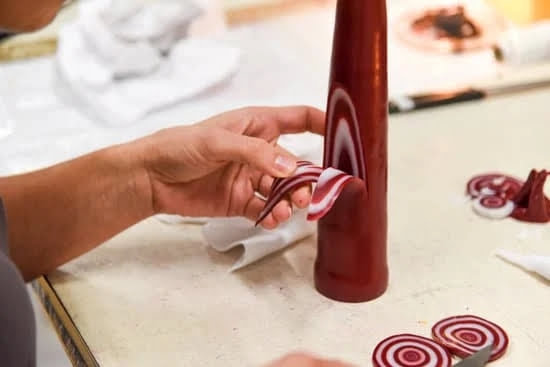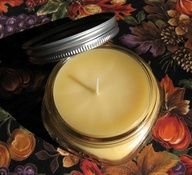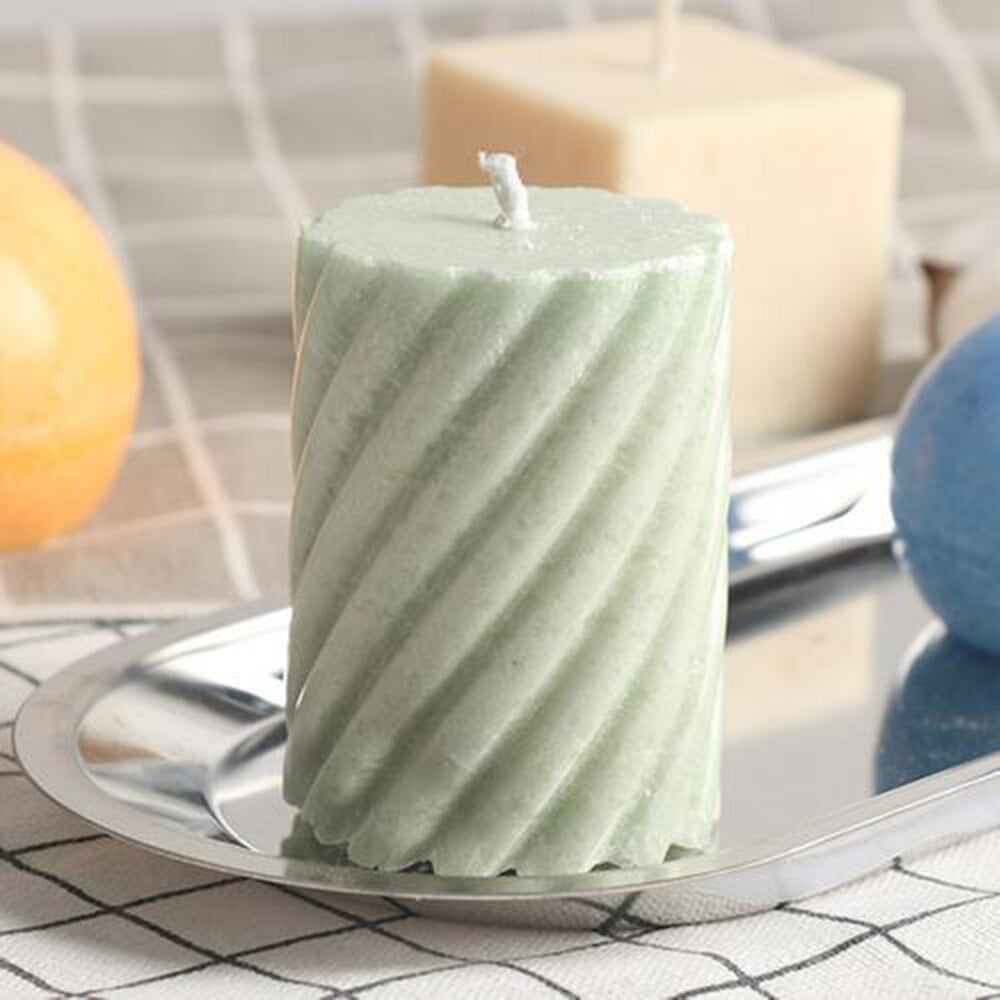Are you embarking on the exciting journey of candle making and wondering what is the best thermometer for candle making? Temperature plays a crucial role in the process of creating beautiful, high-quality candles. From melting wax to adding fragrance and color, having the right thermometer is essential to achieving the perfect results. In this article, we will delve into the world of candle making thermometers, exploring their importance, types, features, and top-rated options available on the market.
Temperature control is a fundamental aspect of candle making. Whether you are a beginner or an experienced crafter, understanding how temperature affects the different stages of candle production is key to achieving the desired outcomes. From ensuring that wax is melted at the ideal temperature to adding fragrances and dyes without compromising the quality of your candles, having a reliable thermometer is essential for success.
When it comes to choosing a thermometer for candle making, there are several options available on the market. Digital and analog thermometers each have their own set of advantages and disadvantages. In the next section, we will explore these types in more detail and identify key factors to consider when selecting the best thermometer for your candle making needs.
Types of Thermometers for Candle Making
When it comes to making candles, having the right thermometer is crucial for achieving the perfect temperature for melting and pouring wax. There are two main types of thermometers commonly used in candle making: digital and analog. Each type has its own set of advantages and disadvantages, so it’s important to understand the differences between them before making a decision.
Digital Thermometers
Digital thermometers are becoming increasingly popular among candle makers due to their ease of use and accuracy. These thermometers typically have a digital display that shows the exact temperature reading, making it easier to monitor the wax as it melts or cools. Digital thermometers also tend to be more durable and resistant to breakage compared to analog models.
However, one potential downside of digital thermometers is that they require batteries to operate, which means they may not be as reliable in certain situations. Additionally, some candle makers find it challenging to read the small digital display, especially when working with hot wax.
Analog Thermometers
Analog thermometers, on the other hand, use a more traditional method of displaying temperature using a scale or dial. Many candle makers appreciate the simplicity and reliability of analog thermometers, as they do not rely on batteries and can be easily calibrated if needed. Analog thermometers also tend to be more budget-friendly than their digital counterparts.
Despite their benefits, analog thermometers may not offer the same level of precision as digital models. The temperature readings on an analog thermometer can be slightly less accurate and may require frequent calibration to ensure consistent results. Additionally, some users find it more difficult to read the temperature on an analog display compared to a digital one.
Ultimately, whether you choose a digital or analog thermometer for your candle making needs will depend on your personal preferences and specific requirements for your projects. Both types have their own unique advantages and drawbacks, so it’s important to carefully consider what features are most important to you before making a purchase.
Key Features to Look for in a Candle Making Thermometer
When choosing a thermometer for candle making, there are several key features to look for to ensure that you have the best tool for the job. Whether you prefer a digital or analog thermometer, here are some important features to consider:
- Accuracy: The accuracy of the thermometer is crucial in candle making, as even a small variation in temperature can affect the outcome of your candles. Look for a thermometer that offers precise and reliable temperature readings.
- Temperature range: Different types of wax require specific temperature ranges for melting and pouring. Make sure the thermometer you choose has a wide enough temperature range to accommodate the various stages of candle making, from melting the wax to cooling and setting.
- Durability: Since candle making involves working with hot wax, it’s essential to choose a thermometer that is durable and heat-resistant. Look for one made from high-quality materials that can withstand exposure to heat without warping or breaking.
- Easy to read display: A clear and easy-to-read display is essential for monitoring the temperature during candle making. Whether it’s a digital screen or a large analog dial, make sure that the thermometer’s display is easily visible while you work.
- Versatility: Consider whether you need a thermometer specifically designed for candle making or if you can use it for other purposes as well. Some thermometers are designed for multi-use applications, which may offer added value.
With these key features in mind, you can narrow down your options and find the best thermometer for your candle making needs.
Ultimately, what is most important when choosing a thermometer for candle making is finding one that meets your specific needs and preferences. There are many options available on the market, so take your time to consider what features are essential for your candle-making process before making a decision. By prioritizing accuracy, durability, readability, versatility, and temperature range, you can find the perfect thermometer to enhance your candle-making experience.
Top-Rated Candle Making Thermometers on the Market
When it comes to finding the best thermometer for candle making, there are several options available on the market. One highly recommended type of thermometer is a digital one. Digital thermometers are known for their accuracy and ease of use. They often come with features such as automatic shut-off and quick temperature readings, making them ideal for candle making where precision is key.
Another popular choice for candle making thermometers is an analog or dial thermometer. These traditional thermometers are reliable and easy to read, with some models featuring adjustable clips to easily attach to your candle making pot or container. While they may not be as quick as digital thermometers, many candle makers appreciate the simplicity and durability of analog thermometers.
One top-rated candle making thermometer on the market is the Habor 022 Meat Thermometer, which is a digital instant-read thermometer that can also be used for candle making. It features a large LCD display for easy reading and provides accurate temperature readings in just 2-3 seconds. The Habor 022 also has a long probe that can reach into deep containers, making it versatile for various candle making projects.
In addition to the Habor 022, other popular options include the Polder THM-515 Candy/Jelly/Deep Fry Thermometer and the Taylor Precision Products Classic Line Candy/Deep Fry Thermometer. Both of these analog thermometers are highly rated for their accuracy and ease of use in monitoring temperatures for candy making, deep frying, and also for candle making purposes.
When considering the best thermometer for candle making, it’s important to weigh factors such as accuracy, ease of use, and durability to find the perfect fit for your specific needs and preferences.
Considerations for Choosing the Best Thermometer for Candle Making
When it comes to choosing the best thermometer for candle making, there are several important considerations to keep in mind. The right thermometer can make a significant difference in the quality of your candles, so it’s essential to choose one that suits your specific needs and preferences. Here are some key factors to consider when selecting a thermometer for candle making:
- Accuracy: One of the most critical factors to consider is the accuracy of the thermometer. Look for a thermometer that provides precise temperature readings to ensure that your candle wax is at the optimal temperature for pouring.
- Response Time: A fast response time is crucial when working with hot wax. Choose a thermometer that quickly responds to temperature changes, allowing you to make timely adjustments as needed.
- Temperature Range: Consider the temperature range required for your specific candle making process. Some thermometers may have a limited range, so be sure to choose one that can accommodate the temperatures necessary for your candle making endeavors.
- Durability: Since candle making involves working with hot materials, it’s essential to select a thermometer made from durable materials that can withstand high temperatures without warping or breaking.
In addition to these considerations, it’s also important to think about the type of thermometer that best suits your needs. Whether you prefer a digital or analog thermometer will depend on your personal preferences and how you plan to use the thermometer during your candle making process.
Ultimately, taking the time to carefully consider these factors will help you choose the best thermometer for candle making, ensuring that you have a reliable tool to help you achieve consistent and high-quality results in your candle crafting endeavors.
How to Properly Use a Thermometer for Candle Making
When it comes to candle making, using a thermometer is crucial for achieving the perfect results. The temperature plays a vital role in ensuring that your candles turn out just the way you want them to. Here are some tips on how to properly use a thermometer for candle making.
Choosing the Right Type of Thermometer
Before you begin making your candles, it’s important to choose the right type of thermometer for your needs. As mentioned in the “Types of Thermometers for Candle Making” section, you have the option of using either digital or analog thermometers. Digital thermometers offer precise readings and are easy to read, while analog thermometers are more traditional and may require calibration. Consider your personal preferences and budget when choosing the type of thermometer that is best for you.
Inserting the Thermometer
Once you have chosen the right thermometer for your candle making project, it’s important to know how to properly insert it into the wax. Make sure that the thermometer is clean and dry before using it. Carefully insert the thermometer stem into the wax without touching the bottom or sides of the pouring container. Ensure that the thermometer is fully submerged in the liquid wax, but not touching any surfaces that could affect its accuracy.
Reading and Monitoring
During the candle making process, it’s essential to continuously monitor and accurately read the temperature of the wax. Keep an eye on any fluctuations in temperature as this can affect how your candles turn out.
Use a timer to keep track of how long it takes for your wax to reach certain temperatures, especially if you are following a specific recipe or instructions. Be mindful of any sudden changes in temperature that may require adjustments in your candle making process.
By following these guidelines on properly using a thermometer for candle making, you can ensure that your candles turn out just as desired. Whether you prefer a digital or analog thermometer, proper usage and monitoring will help you achieve consistent results in all your candle making endeavors.
Maintenance and Care Tips for Candle Making Thermometers
One of the most important aspects of candle making is maintaining precise temperatures throughout the process. Ensuring that your thermometer is properly maintained and cared for is crucial to its accuracy and longevity. Proper maintenance and care can also contribute to the safety and quality of your candle making endeavors.
Firstly, it is essential to clean your thermometer after each use. Residue from wax or oils can build up on the surface, affecting its accuracy over time. Use a soft cloth dampened with rubbing alcohol or warm soapy water to gently wipe the thermometer clean. Avoid submerging it completely in water, especially if it is not waterproof.
In addition, store your candle making thermometer in a safe and secure location when not in use. Keeping it away from direct sunlight, extreme heat, or excessive moisture can help prevent damage or deterioration. It’s also a good idea to store it in a protective case or sleeve to avoid accidental breakage or exposure to contaminants.
| Maintenance and Care Tips | Candle Making Thermometers |
|---|---|
| Clean after each use using rubbing alcohol or warm soapy water | Helps maintain accuracy and longevity |
| Store in a safe location away from sunlight, heat, and moisture | Prevents damage or deterioration |
| Use a protective case or sleeve for storage | Minimizes risk of breakage or exposure to contaminants |
Conclusion
In conclusion, finding the perfect thermometer for your candle making needs is crucial for achieving the best results in your craft. Whether you prefer a digital or analog thermometer, it’s important to look for key features such as accuracy, durability, and ease of use. By considering these factors, you can narrow down your options and find a thermometer that suits your specific candle making requirements.
When searching for the best thermometer for candle making, consider top-rated models on the market that have received positive reviews from fellow candle makers. Look for thermometers with a reputation for accuracy and reliability, as these are essential qualities for ensuring that your candles turn out just right every time.
Lastly, once you have chosen the perfect thermometer for your candle making needs, be sure to properly use and care for it. Following manufacturer guidelines for maintenance and cleaning will help prolong its lifespan and ensure accurate temperature readings throughout your candle making process. With the right thermometer at your disposal, you can elevate your candle making skills and create beautiful, high-quality candles with confidence.
Frequently Asked Questions
What Kind of Thermometer Do I Need to Make Candles?
To make candles, you will need a thermometer that can accurately measure high temperatures. A candy or deep-fry thermometer is recommended for this purpose as it can withstand the high temperatures needed for melting and pouring wax.
What Is the Best Thermometer for Melting Wax?
The best thermometer for melting wax is a digital candy thermometer with a metal probe. This type of thermometer provides precise temperature readings and can be easily cleaned after use. Look for one with a clip to attach it to the melting container for hands-free monitoring.
Will a Meat Thermometer Work for Candles?
While a meat thermometer may work in a pinch, it is not the best option for making candles. Meat thermometers are designed for lower temperature ranges and may not provide accurate readings at the high temperatures required for melting wax. It’s best to invest in a dedicated candy or deep-fry thermometer for candle making.

Welcome to my candle making blog! In this blog, I will be sharing my tips and tricks for making candles. I will also be sharing some of my favorite recipes.





